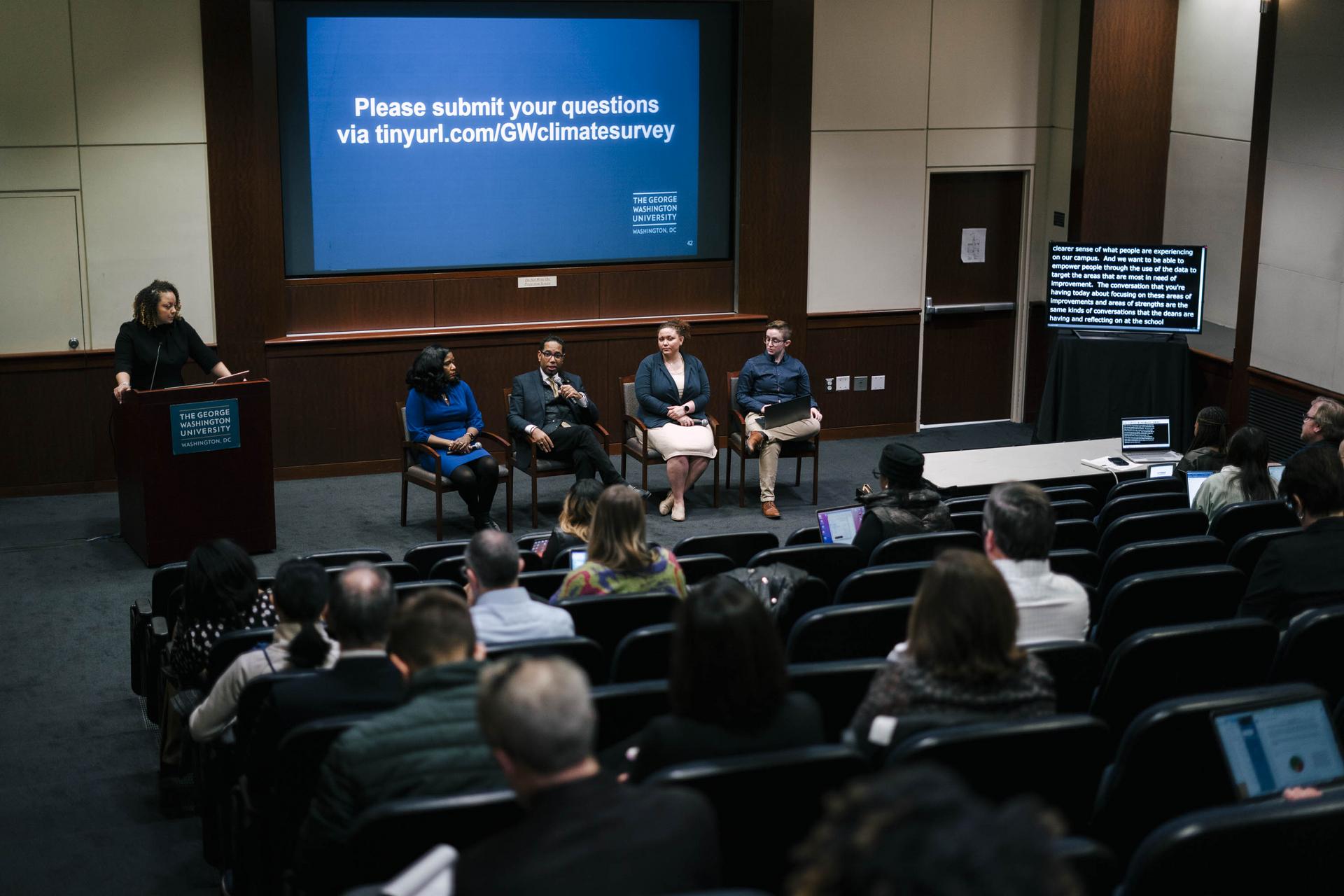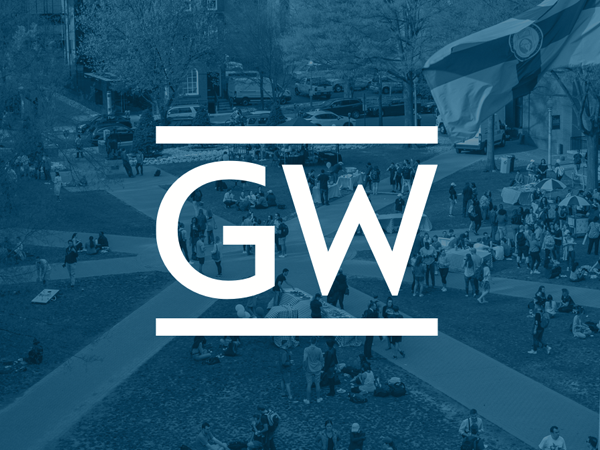A majority of student, faculty and staff respondents at the George Washington University have found communities in which they feel a strong sense of belonging, according to the results of GW’s Diversity Program Review climate survey released at two community forums this week.
Findings also suggested a culture of mutual support among GW community members but identified opportunities for improvement in the experiences of members with marginalized identities.
The presentation given at the forums and an executive summary of survey findings both are now publicly available.
“I firmly believe that we can only reach our full potential as a comprehensive global research university if our aspirations are defined by inclusive excellence,” Provost Christopher Alan Bracey said at the forums on Tuesday and Wednesday in the University Student Center.
“Students, faculty and staff are all responsible for committing to the work of creating an inclusive and equitable environment,” Bracey said, “where we each feel that we belong and where we have an opportunity and the resources to thrive.”
Students, faculty and staff reported personal investment in the diversity of the GW community: Almost every respondent agreed they were comfortable having colleagues or classmates from diverse backgrounds, and more than 75 percent believed that increasing diversity of the university community is an important goal for GW. In written comments, those surveyed also highlighted exemplary diversity, equity and inclusion programming on campus, calling out in particular the Office of Diversity, Equity, and Community Engagement (ODECE), the Multicultural Student Services Center (MSSC), identity-based student groups and other student life groups.
The survey also revealed clear areas for improvement. Half of respondents had experienced some form of negative treatment, and community members with minoritized identities, including Black, LGBQA+ and transgender and nonbinary respondents, experienced it more.
GW community members provided concrete suggestions for climate improvement in their written comments, with the most common suggestion being improved diversity of student body, staff and faculty with an emphasis on race and ethnicity and maximizing inclusion. Individuals also emphasized the importance of support from leadership and structural practices to incentivize diversity, equity and inclusion in the community.
As part of the ongoing Diversity Program Review process, the Diversity Program Review team created this climate survey in collaboration with GW’s Office of Survey Research and Analysis to gather information about the current university climate related to diversity, equity and inclusion for students, faculty and staff. The survey closed on May 27, 2022.
Ahleah Miles and Abbey Salvas, survey research analysts, discussed how survey questions were developed and the methodology used in analyzing answers. Similar surveys from other institutions of higher education were analyzed and then questions customized for GW were developed. There were a mix of quantitative questions, in which respondents rated their agreement with a given statement, and qualitative questions allowing for open-ended response.
Recommendations based on the survey results and other data will be presented to an external review team that includes nationally recognized DEI leaders, then incorporated into a recommended diversity action plan to be submitted to university leadership and the Board of Trustees.
At the forums, staff and administrators broke down the survey’s methodology and responded to questions and comments from dozens of community members in attendance virtually and in person. Questions dealt with the specifics of pedagogical and administrative change, and how GW could measure meaningful improvement and reconcile different responses and experiences across demographic groups.
Vice Provost for Diversity, Equity and Community Engagement Caroline Laguerre-Brown said the results presented “an opportunity” for the Diversity Program Review team to provide recommendations that will help people operationalize their commitment to diversity, equity and inclusion in their day-to-day interactions.
“When I talk to faculty across this institution, and one of the reasons why I have continued to enjoy being a member of this community, is that people are generally supportive of diversity and inclusion in terms of an agenda and as an overall goal for the institution,” she said.
For those who want to become more involved, Bracey said that apart from the many things faculty can do within their immediate areas to improve the climate, there are also ways to work with the administration. He encouraged interested parties to reach out to Laguerre-Brown.



